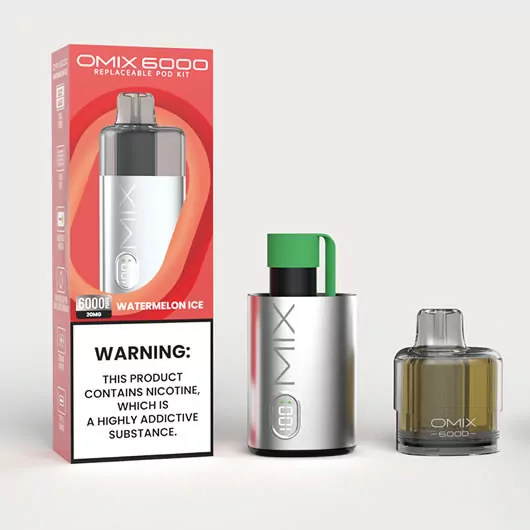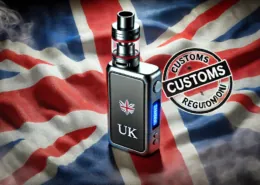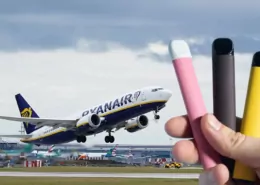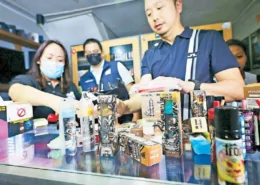Navigating UK Airline Vape Policies: Ryanair, easyJet, Jet2, TUI, and BA Rules Explained
Vaping has become a common alternative to traditional smoking for millions in the UK, with 2023 figures indicating around 5.6 million vapers nationwide. While the harms and benefits are still debated, one thing is certain: if you’re a vaper and planning to travel by air, understanding the specific rules for carrying and using your vape device is crucial. Unlike smoking, which has a blanket national ban in many public spaces, vaping policies can differ significantly, especially when it comes to air travel. This guide breaks down the current vape rules for major UK airlines, including Ryanair, easyJet, Jet2, TUI, and British Airways, to ensure your journey is smooth and compliant.
The increasing popularity of vaping has led to a surge in travel-related queries, with UK searches for “How many vapes can I take on a plane?” reportedly rising by 60%. Confusion also surrounds where to pack devices, as evidenced by a near tripling of searches for “Can you put disposable vapes in your suitcase?“. The short answer to the latter is almost universally “no” for checked luggage, and this article will explain why.
Why the Strict Airline Rules for Vapes?
The core reason behind stringent airline regulations for vapes, e-cigarettes, and other personal vaporizers primarily revolves around safety, specifically the lithium-ion batteries these devices contain. Airlines classify vapes as Portable Electronic Devices (PEDs), similar to laptops and power banks. Lithium batteries, if damaged, short-circuited, or exposed to extreme conditions, can pose a significant fire risk.
Incidents involving lithium batteries overheating or catching fire in aircraft cargo holds, where they might go undetected for longer, have led to a global standard: these devices, along with their spare batteries, must be carried in the passenger cabin. This allows for quicker identification and response should an issue arise. The ban on packing them in checked hold luggage is therefore a critical safety measure.
Another consideration, though less about immediate danger, is the potential for vape juice to leak. Cabin pressure changes during flight can cause tanks to leak or even crack. While this is more of an inconvenience, some airlines subtly address this by advising passengers to be mindful of their liquid allowances and secure packaging.
General Airline Policies: Key Takeaways for Vapers
Across most airlines, the policies for carrying vapes are remarkably consistent:
- Carry-On Only: All vape devices, e-cigarettes, e-pipes, and personal vaporizers must be transported in your carry-on luggage. This applies to the device itself and any spare batteries.
- No Use Onboard: Using your vape (or any smoking device, including e-cigarettes) inside the aircraft cabin is strictly prohibited and often constitutes a criminal offence. This rule is non-negotiable.
- No Charging Onboard: Charging your vape device or its batteries during the flight is also universally banned.
- Liquid Restrictions: Vape juice or e-liquid falls under the standard aviation security rules for liquids. This means it must be in containers no larger than 100ml and placed within a single, transparent, resealable plastic bag (typically 20cm x 20cm) along with your other liquids, ready for security screening.
- Battery Safety: Airlines often recommend or require that spare batteries be individually protected to prevent short circuits. This can mean keeping them in their original retail packaging, taping over the terminals, or placing each battery in a separate plastic bag.
Airline-Specific Vape Rules:
Ryanair
Ryanair permits passengers to bring e-cigarettes into the cabin. However, they reiterate that the use of e-cigarettes, like traditional cigarettes, is strictly banned onboard. Vape juice is subject to standard liquid restrictions and must be in your hand luggage for security scanning. Crucially, Ryanair states: “E-cigarettes should not be carried in checked baggage and should only be carried in the passenger cabin as part of your carry-on luggage.” This is due to their classification as PEDs.
easyJet
easyJet’s website is clear: “All electronic cigarettes and vaping devices must be carried in the cabin, re-charging is strictly prohibited and the device must be completely switched off.” They also remind passengers that smoking any type of cigarette in the cabin is a criminal offence. Echoing the safety concerns, easyJet prohibits vapes in hold luggage and allows a maximum of two spare batteries in carry-on baggage, emphasizing the fire risk associated with lithium batteries. They advise wrapping spare batteries individually and suggest emptying vape tanks before flying, as changing cabin pressures can cause leaks or cracks – a practical tip for avoiding messy situations.
Jet2
Jet2 allows passengers to carry a maximum of 15 PEDs each, which includes not only vapes but also medical devices, laptops, mobile phones, and cameras. As with other carriers, Jet2 mandates that e-cigarettes (including e-cigars, e-pipes, and other personal vaporizers) containing batteries must be carried in the cabin. They explicitly prohibit the charging of these devices onboard. To avoid any breaches of policy or potential fines, it’s recommended to ensure your vape is fully charged before you board.
TUI
Package holiday giant TUI aligns with the industry standard. Their website states: “You’re not allowed to use electronic cigarettes, or any other portable smoking devices, on the plane – this includes charging. They can be carried on as hand luggage only. You’re not permitted to carry e-cigarettes or their spare batteries within your hold luggage.”
British Airways
British Airways (BA) unequivocally states: “Smoking, including the use of personal vaporisers such as vapes, e-cigarettes, e-pipes or any other smoking tool or device, is completely prohibited on board our aircraft, as well as in many airports around the world.” BA requires smoking devices to be placed in hand baggage and packaged to prevent accidental activation – a good tip for any vaper. If your vape has liquid components, the standard 100ml limit and liquid bag rules apply.
Importantly, British Airways advises passengers to “familiarise themselves with the national laws surrounding vaping for the destinations they are travelling to.” This is critical, as vaping regulations vary significantly worldwide, with some countries having strict controls or even outright bans on vaping products.
Beyond the Aircraft: Airport and Destination Rules
While all UK airports prohibit smoking and vaping within the terminal buildings, most provide designated smoking/vaping areas outside the terminals. However, these are typically only accessible before you pass through security checkpoints. Once airside, opportunities to vape are generally non-existent until you reach a designated area at your destination.
The advice to check destination-specific laws cannot be overstated. Countries in regions like Southeast Asia (e.g., Thailand, Singapore), the Middle East, and parts of South America have very strict anti-vaping laws, including hefty fines or even imprisonment for possession or use. Always research the local regulations of your destination and any transit countries before you travel.

Ecigator OMIX 6000 (2+10ml) Pod Kit
The Ecigator OMIX 6000 is designed to be replaceable and rechargeable, and the ariflow is adjustable.
The kit comes with a 2ml prefilled pod and a 10ml E-liquid container, delivering up to 6000 puffs.
With the mesh coil technology, the OMIX 6000 will produces a consistent pure taste to ensure a superior vaping experience.
Tips for Hassle-Free Vape Travel
- Pack Smart: Ensure your device is turned off and packed to prevent accidental activation.
- Battery Care: Protect spare batteries individually.
- Empty Tanks: Consider emptying your vape tank to prevent leaks due to cabin pressure changes.
- Charge Before: Charge your device fully before your flight as you won’t be able to onboard.
- Quantity: Carry a reasonable quantity of vape juice for personal use, adhering to liquid limits.
- Check and Double-Check: Always verify the latest rules with your specific airline before you fly, as policies can occasionally be updated. Crucially, research the vaping laws of your destination country.
Conclusion: Vape Smart When You Fly
Traveling with a vape requires a bit of extra planning and awareness of airline and international regulations. The key principles are consistent: carry your vape and spare batteries in your cabin baggage only, never use or charge them onboard, and adhere to liquid restrictions for your e-juice. By understanding and respecting these rules, and by researching the laws at your destination, you can ensure a smoother and stress-free journey. Safe travels!
- Austria Plans to Ban Disposable E-Cigarettes - August 5, 2025
- Vaping vs. THC Drinks: Which Cannabis Option Is Right for You? - August 4, 2025
- Colombia’s New Vape Law: A Reality Check on Enforcement - August 4, 2025








